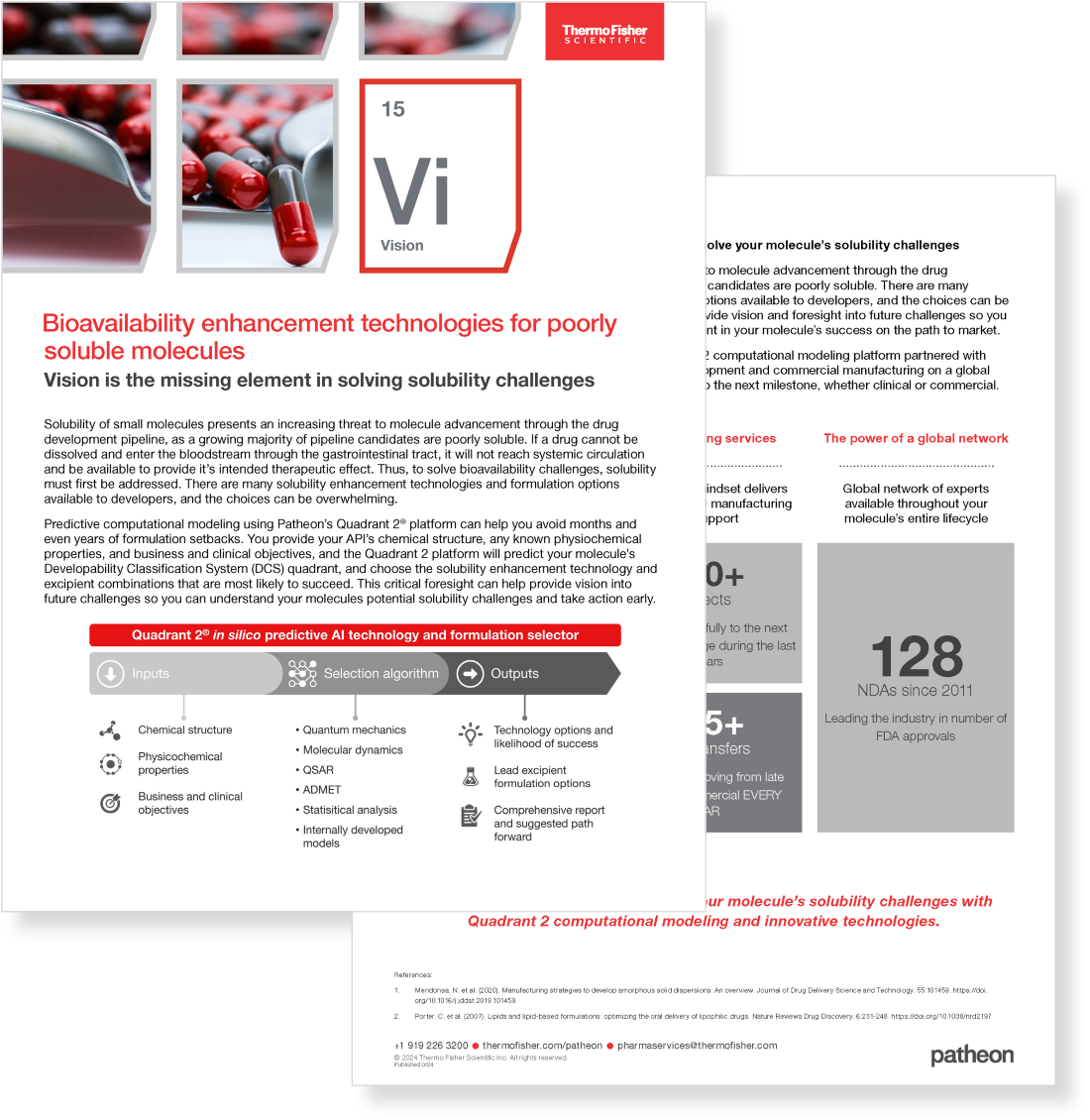Bioavailability enhancement technologies for poorly soluble molecules
Infographic
It’s estimated that about 40% of drugs with market approval and nearly 90% of molecules in the discovery pipeline are poorly soluble. This can impede drug absorption, leading to reduced bioavailability and compromised therapeutic efficacy.
To help overcome such challenges, drug developers may employ a variety of techniques aimed at solubility enhancement. However, this can require months and even years of trial-and-error experiments, leading to formulation setbacks.
Industry-leading advancements like Thermo Fisher Scientific’s proprietary Quadrant 2TM technology employ artificial intelligence (AI) and machine learning (ML) to streamline this empirical process. By utilizing computational modeling to predict your molecule’s Developability Classification System (DCS) category, it can recommend a solubility enhancement technology that’s most likely to succeed.
Our new interactive infographic explores how Thermo Fisher Scientific’s Quadrant 2TM platform leverages AI/ML tools to identify solubility enhancement technologies. The infographic also takes a specific look at four formulation options available to today’s drug developers, including:
- Spray drying: Solving for solubility at scale
- Hot melt extrusion (HME): Solubility enhancement at the molecular level
- Lipid formulations: Bolster pharmacological efficacy by improving solubility
- Solid state chemistry: Dissolving limits and amplifying impact
Download the infographic to learn how computational modeling backed by industry-leading CDMO expertise can solve your molecule’s solubility challenges.


